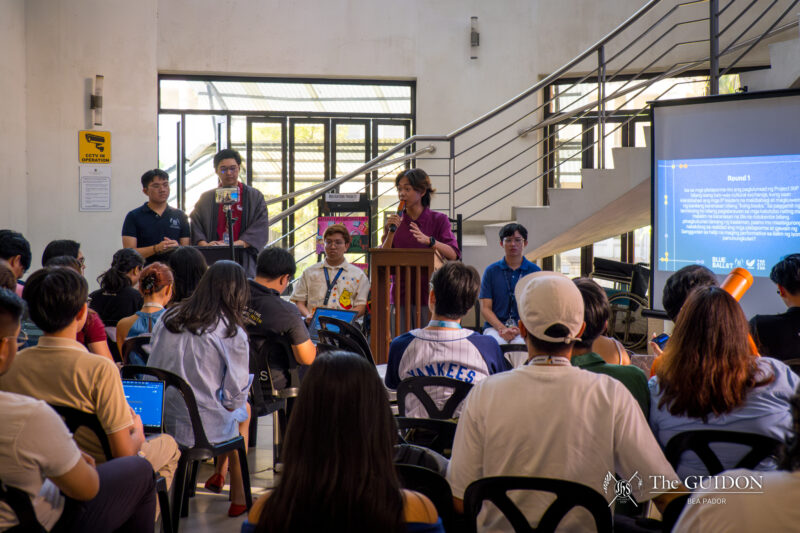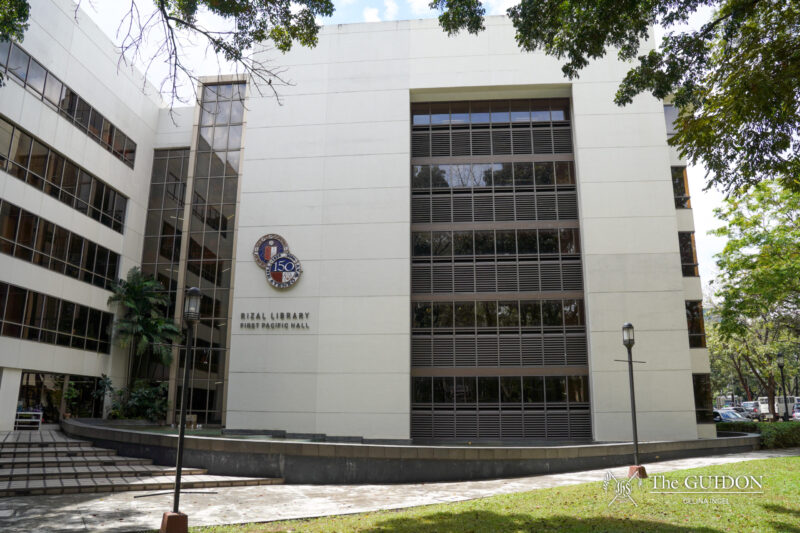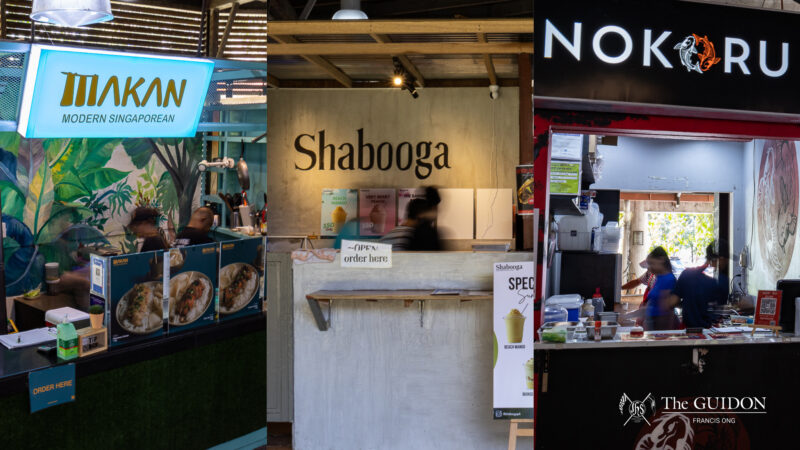FOLLOWING THE end of the first semester, the University proceeds with the renovation of the North Carpark beginning December 21, 2023 until March 2, 2024. Consulted with the Ateneo Institute of Sustainability (AIS) and the Campus Grounds Advisory Committee, the plan entails removing 82 trees within the car park’s vicinity and repurposing their wood.
In a stakeholder meeting last December 11, Vice President for Administration Rodolfo Ang said that 50 seedlings will be planted for every tree cut, among which will be planted on campus and official tree planting sites outside the Ateneo. Overall, the top sustainable private university in the Philippines will need to plant a total of 4,100 seedlings.
According to Ang, the renovations are a response to the community’s complaints regarding the car park’s uneven roads and the inadequate parking slots within the campus. Notably, the plan also includes the construction of a mini-park and aims to ensure better walkability for pedestrians and persons with disabilities.
Paving new plans
The project will be conducted in two phases: Phase 1 is scheduled from December 21, 2023 to January 28, 2024, followed by Phase 2, which will take place from January 28 to March 2, 2024. After both phases, the North Carpark will offer a substantial addition of parking spaces, from 161 to 217, adding 56 slots.
In Phase 1, the eastern half of the car park—adjacent to Bellarmine Field and Xavier Hall—will be temporarily closed for construction, reducing available parking slots to 50. Upon completion, the east half will reopen while the western section near the Ateneo School of Government will undergo construction, providing students with access to 166 parking spaces.
Additionally, other notable refurbishments include laying paving stones on parking slots, asphalt coating on driveways, leveling uneven asphalt surfaces, and establishing a mini-park and rest area for drivers. The administration also plans on creating covered trellis walkways for pedestrians and persons with disabilities, installing streetlights and surveillance cameras, and improving drainage systems, lane markings, and signages within the vicinity.
Regarding the mini-park, Ang specified that the wood from the felled trees will be repurposed for benches and the trellis fences for the pedestrian walkways.
Uprooting concerns
To accomplish said plans and renovations, the grounds surrounding the car park will be cleared for construction. This gradual clearing will include the removal of 82 trees, which largely compose one Gmelina and 61 Mahogany which were deemed invasive to the ecosystem. Notably, one Narra tree will undergo earth balling.
In addition to these, 20 other trees variously composed of three Balitbitan, two Eucalyptus, two Golden Shower, two Kupang, four Mangga, one Neem, two Sampaloc, and two Weeping Fig will also be removed.
Commenting on the invasive nature of Gmelina and Mahogany, AIS Program Manager for Campus Sustainability Abigail Favis, MSc said that removing them will not affect campus wildlife.
“[The trees] have no biodiversity relationship with our wildlife. […] We might be improving their habitat by removing those invasive and biologically useless trees,” Favis added.
In replacing these trees, Favis mentioned that the new trees to be planted should be native to the Philippines so they can better contribute to local biodiversity.
Apart from being invasive, Ang also cited that the large, heavy pods of the trees have served as potential falling hazards to unaware pedestrians.
Moving forward
As an alternative to the temporary reduction of parking slots in the North Carpark, Higher Education Cluster (HEC) students may occupy slots in the University Residence Halls anytime, as well as the Grade School parking only after the elementary students’ dismissal.
Currently, there are three refurbishment projects within the Loyola Heights campus, including the Blue Eagle Gym renovation for training facilities and building amenities. Moreover, Ang mentioned that the Montserrat cluster in the Ateneo High School will be reconstructed to four-story classroom buildings.
On a similar note, Faber, Kostka, and Xavier administration offices will be relocated to the Old Communication Building—forming the Central Administration Building. From thereon, the Offices answering to the University President will occupy the Xavier building while the HE offices will take over the Faber building.
At present, the administration and the AIS are both collaborating on the Campus Landscaping Master Plan, which consists of future improvements on sustainability efforts and implementing guidelines regarding tree distances from pedestrian walkways.
Following the University’s commitment to becoming a Laudato Si’ University by 2030, Ang claimed that all of the campus efforts will be aligned with environmental sustainability. Likewise, the Sanggunian also calls for student feedback regarding other campus initiatives, such as the increase of e-jeeps, bike racks, and e-jeep and bike lanes.






